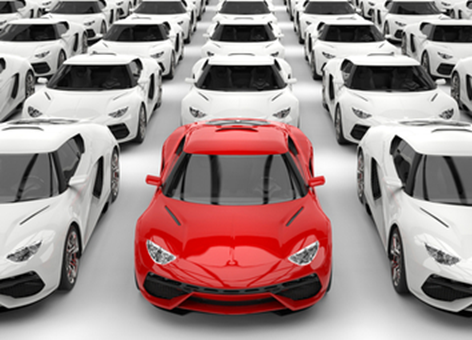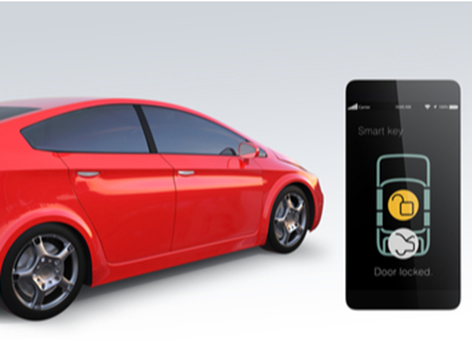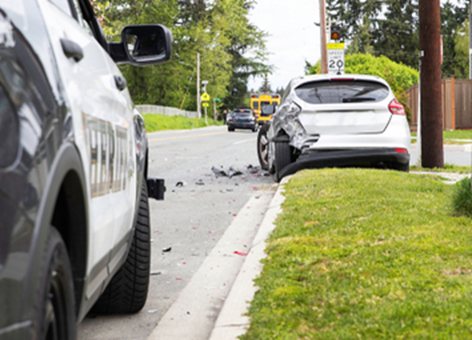Car insurance companies use their algorithms based on your personal information and company claim data to determine your policy rates. Knowing what factors affect your premium rates can help you make a more informed decision when purchasing insurance. The rule of thumb is to choose a policy that perfectly balances the coverage amount with the premium amount.
Here are the factors that play a crucial role in determining your car insurance premium:
1.Model of the Vehicle

Insurance companies will charge you a higher premium if you are going to insure your Ferrari. Technically, the insurance premium depends on the value of your vehicle, which is termed as Insured Declared Value (IDV). Besides the model, the vehicle size is also a deciding factor in car insurance premium rates. Big cars like SUVs are generally safer than small cars in accidents. Additionally, large cars with similar safety ratings as small cars have lower premium rates. Engine to body size ratio also impacts premium rates. For example, insurance for a car that comes with a V8 engine costs more than a small car with a V4 engine.
2.Manufacturing and Registration Dates
The manufacturing year and registration date of the vehicle are also taken into account to decide insurance premium rates. So the older the car, the higher the premium you will have to pay. A car is a depreciating asset which means as your car gets older, repair costs increase since spare parts get harder to find.
3.Purpose of the Vehicle
The manufacturing year and registration date of the vehicle are also taken into account to decide insurance premium rates. So the older the car, the higher the premium you will have to pay. A car is a depreciating asset which means as your car gets older, repair costs increase since spare parts get harder to find.
4.Gender & Age

According to statistics, young males are more prone to accidents than female teenagers. So, young men usually incur higher premium rates than young women. The premium rates get stabilized once you reach the age of 25. However, older men generally have cheaper premium rates than women.
5.Marital Status

According to the study, marital status is almost as significant in car insurance premium rates as age and gender. On an average, a married 22-year-old pays lesser premium than a single 20-year-old for the same policy. Premium differences between married and unmarried drivers drop off significantly as they get older. Notably, a marriage will generally qualify you for a healthy discount on your car insurance premium. The important downside is that insurance companies will factor both spouses’ driving records when creating the quote. If the person you marry has multiple accidents or citations, you may end up paying higher premiums.
6.Personal Driving Behavior
If you have been involved in accidents or have made previous claims, the insurance company will infer that you are more likely to make another claim. If you have a bad driving record, the company might even deny you insurance altogether.
Other personal details that affect your premium rates include the purposes you use the car for, the distance you drive. You might be able to get a discount on your premiums if you don’t use your car every day for work.
7.Safety Devices

Modern cars pay a lot of attention to their passenger's safety. Most insurance companies do not offer any discount on insurance rates until the car’s safety technology has been proven over the years. Some companies give incremental discounts for every safety feature while others provide flat discount rates for having any combination of such features. Below is a list of safety devices that qualify for a discount on a car insurance premium:
- Anti-lock brakes
- Airbags
- Seat belts
- Daytime running lights
- Electronic stability control
- Automatic seat belts
- Lane departure warnings
- Adaptive cruise control
One can avail around 2.5% discount on the premium amount because of your car's safety features. However, these safety devices need to fall under the list approved by the Automobile Research Association of India (ARAI).
8.Insurance Zones

Insurance companies have specific demarcated zones to decide a car's insurance premium. These insurance zones are created according to a vehicle's vulnerability to accidents and theft. Your vehicle's insurance premium will vary depending on your registration location. Generally, this zonal bifurcation comprises of metro cities and the rest of India.
If you are living in an urban area with congestion and traffic, accidents and insurance claims will be more prevalent. Living and driving in a metro area will push your car insurance premium rates a bit higher. Car insurance companies will also look into your ZIP code to find out the rate of stolen cars in your area, cases of vandalism and number of claims.
9.No Claim Bonus (NCB)
No Claim Bonus or NCB is a cumulative discount offered for a claim-free year. The money saved for every unclaimed year adds on to the discount offered on the premium annually.
10.Type of Insurance Plan
A more customized car insurance plan costs you higher premiums than standard plans. The premium is subjected to change depending on the coverage and benefits offered by the policy.
The Future of Car Insurance Premiums
The insurance industry is evolving rapidly as is the motor industry, and even driving behaviour to an extent. One can expect a similar growth in factors affecting car insurance premiums. Your credit history, distance traveled, regular car servicing from an authorized dealer, owning a house, and behavioral patterns might also play a key role in ascertaining your car insurance premium in the coming future.